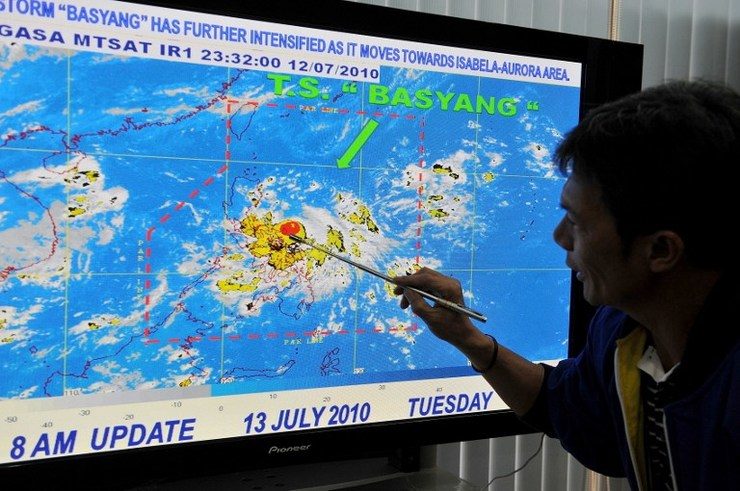SUMMARY
This is AI generated summarization, which may have errors. For context, always refer to the full article.

MANILA, Philippines – The Philippines will simplify its weather warnings to make them easier to understand in order to prevent the annual loss of hundreds of lives from natural calamities, officials said Wednesday, November 26.
The state weather service of one of the world’s most disaster-prone nations is working with linguists to ensure that the threat posed by typhoons, floods and other events would be fully understood by people, they said.
“People need to be told in a language they can understand the dangers that they face,” said Roberto Añonuevo, executive director of the government’s Komisyon sa Wikang Filipino (Filipino Language Commission).
“Typhoons and storms are a common occurrence, so they become complacent. This will help them to respond. This is potentially life-saving,” he told Agence France-Presse.
Giant walls of seawater, called “storm surges” generated by Haiyan (Yolanda), the strongest ever typhoon to hit land, were blamed for most of the 7,350 lives lost in the central Philippines a year ago.
Even though the hardest-hit areas were warned beforehand, the weather service and other officials later admitted that the victims were unfamiliar with the term “storm surge”, which they said failed to adequately convey the deadly threat.
President Benigno Aquino has been among the weather service’s most severe critics, often lecturing its forecasters publicly to use layman’s terms in its bulletins.
About 20 typhoons and storms hit the country each year, triggering floods and landslides that kill hundreds.
Earthquakes and volcanic eruptions are also an ever-present threat in the Asian archipelago that forms part of a “Ring of Fire” of Pacific islands formed by volcanic activity.
“People with lower levels of education at times have trouble understanding technical terms,” conceded Lani Aquino, a public relations officer for the Philippine Atmospheric, Geophysical and Astronomical Services Administration (PAGASA). (READ: “Tsu-balod or tsunami?: Making disaster terms understandable” and “Let’s call storm surges ‘silakbô’ in Pilipino“)
“So what happens is they do not make the necessary precautions for certain meteorological events,” Aquino, no relation to the president, told Agence France-Presse.
The weather service spokeswoman said it was reviewing a 300-word glossary of more easily understood weather terms prepared by the language commission, including the words for storm surges in the country’s major dialects.
Aside from Filipino-language weather bulletins, Añonuevo said they will also seek to make English-language weather bulletins, which routinely throw up obscure terms such as “intertropical convergence zone”, more intelligible.
The commission’s linguists are also translating English-language disaster preparedness manuals put out by the country’s civil defense office, he added. – Rappler.com
Add a comment
How does this make you feel?
There are no comments yet. Add your comment to start the conversation.